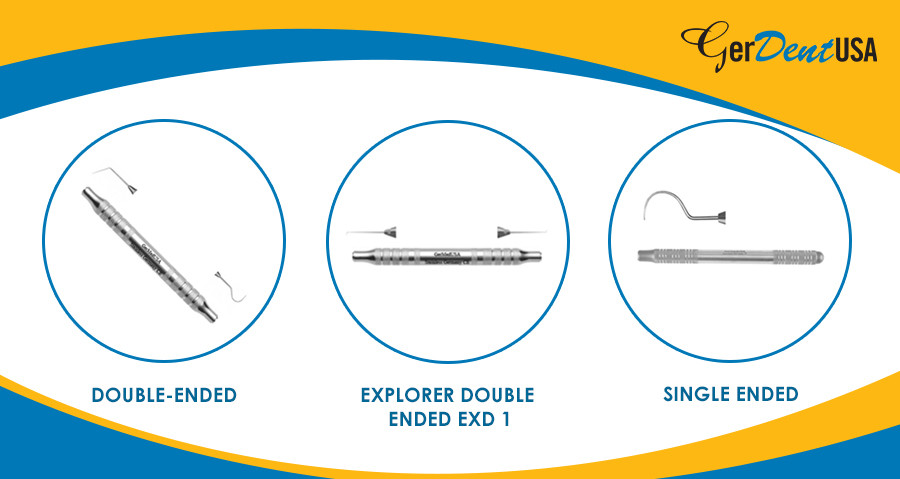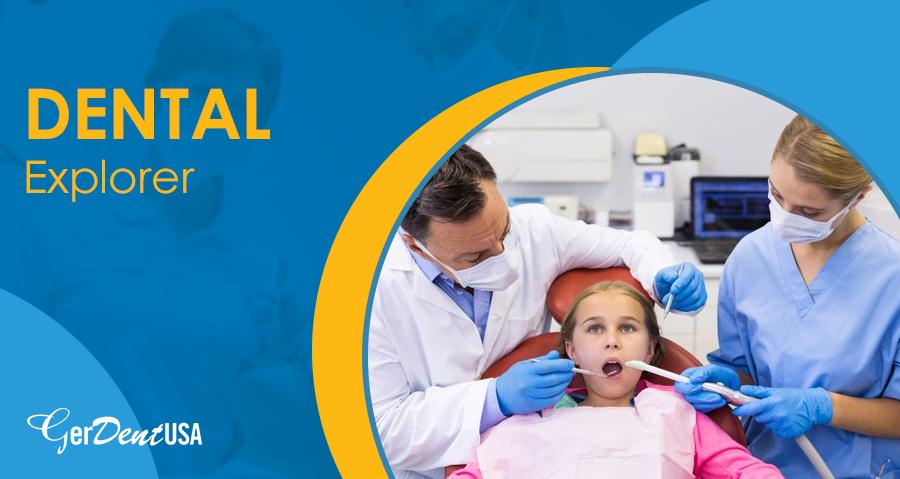Dental explorer is considered the best staple in your dental instrument tool kit
Dental explorer is designed to determine the caries presence. This is a sharp-ended instrument and can explore other dentin and enamel defects, such as odontoclastic resorptive lesions and fractures.
Let us clarify here that this instrument also has another recognition, "Sickle probe." The Dental explorers use dentists for the very initial diagnosis of a patient. Notwithstanding that dental instrument is a manual tool that serves as an extension of the clinician's hand. Additionally, these instruments own sharp pointy ends, where one end may be curved or shaped like a "cow horn," and the other end may be angled to a point.
The question about its uses must be in minds who want to about it right now, what are the uses of these dentistry instruments? Explorer dental instrument uses to examine the teeth surfaces for detection of caries, calculus, plaque, Dental Anomalies, and anatomic features of the teeth. Furthermore, this extraction tool also helps to assess dental restorations.
The Explorer tool is designed with flexible metal. Therefore, it can conduct vibrations from the pointy end to the clinician's fingers. The very sharp pointed end of the tip uses to adapt it to the tooth for calculus detection. Furthermore, some designs may also feature a direction bent to a 90-degree angle to the lower shank. The bent layout is for subgingival exploration of periodontal pocketing and subgingival calculus deposits. The long shank design enables the explorer to reach the root surfaces of anterior and posterior teeth. The clinician should know about the different configurations and uses of the Explorer tool to avoid trauma anywhere in the mouth. On the other side, the satisfactory working end and the flexible shank of the Dental explorer enhance tactile sensation to the clinicians working for hand.
Types of the Dental Explorers

Some "Do's" and "Don’ts" while using Dental Explorers Instrument
1. The explorer helps dentists with short strokes, only about 2-3 millimeters in length. The tip should always be in contact with the tooth surface.
2. Don't forget to apply many overlapping, multidirectional strokes while assessing the root surface. The tip of this instrument, while evaluating the tooth's proximal surfaces, sounds good.
3. You have to avoid "Death Grip" always. Nonetheless, it would be best if you also avoided increased pressure from the middle finger. Both of these mistakes can reduce tactile information to the clinician's fingers. In addition, pulling and reinserting the tip may cause unnecessary gingival trauma.
4. Don't remove the explorer tip while making an upward stroke with the Explorer instrument.
GerDentUSA is offering a wide range of dental surgical instruments. These dentistry instruments come with a wide range of variations, sizes, and patterns to aid professionals in a line of dental procedures. We make the best quality instruments for the healthcare market today. Our products are unique in their design and making. They are efficient, resilient, and have corrosion-resistant highly.

